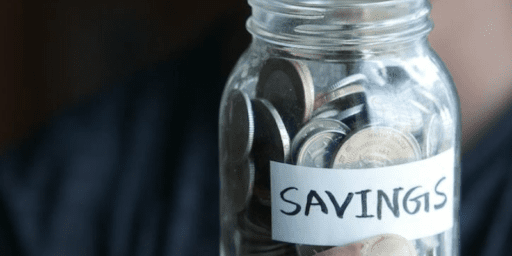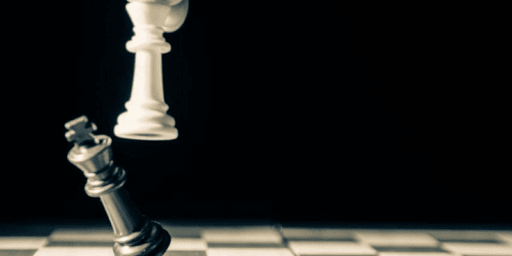How Capital Cost Allowance Works (CCA)
I’ve brushed on Capital Cost Allowance (CCA) before when discussing rental property tax deductions and the CCA schedule for the purchase of a computer in 2009. However, as it can be a fairly complicated topic, I thought I would write a primer and explain the basics of CCA.
Capital Cost Allowance is basically the fancy tax term for claiming the depreciation of a business asset. Some expenses purchased under a business, like advertising, can be considered a current expense and can be claimed in the current tax year. Other expenses, like equipment, must be claimed as a capital expense and depreciated over a set schedule defined by the government. The depreciated amount of the equipment is claimed every year.
According to the governments economics division, the more formal definition of capital cost allowance is:
The cost of depreciable assets, such as buildings, furniture and equipment, acquired for use in business or professional activities cannot be deducted as an upfront expense when calculating net income for tax purposes. In recognition, however, of the fact that these assets wear out or become obsolete over time and are replaced, the federal government created the capital cost allowance (CCA). The CCA is a non-refundable tax deduction that reduces taxes owed by permitting the cost of business-related assets to be deducted from income over a prescribed number of years.
Rental Property/Business
For rental properties, the building itself can be depreciated via capital cost allowance. The downside of claiming CCA on the building itself is that the investor will have to pay it back once the building is sold. It is generally recommended that CCA is NOT claimed on the building itself, however, you would have to contact a tax pro for your individual situation.
A common question about rental properties is if upgrades or repairs made to the property will count as a current expense or a capital expense. Generally speaking, if the expense was made to “upgrade” the property, then it should be claimed under the appropriate CCA schedule. For example, if appliances (class 8 – 20%) were purchased for the rental, then it would have to be depreciated accordingly every year. However, if the expense was more of a “repair”, such as if the existing refrigerator was broken and someone was hired to fix it, then it can be claimed as a current expense.
Another example is from a reader, he asked if he were to build a fence on a rental property if he could claim it that year. Under that circumstance, the addition of the fence should be considered a capital expense and depreciated every year. However, if he were to repair an existing fence, I think it would lean towards being a current expense.
The same rules apply for businesses. That is, if you purchase a piece of equipment for the business, then it’s most likely to be considered a capital expense.
What are the CCA Rates?
Here is more detailed information about rental properties, CCA classes and and taxation straight from CRA.
How to Calculate CCA
Calculating CCA is fairly straight forward but each category of capital expense has it’s own rate schedule as defined by CRA. What do you do with the rate given? There are two methods:
Declining Balance Method
This method is the most commonly used for most asset classes and is fairly simple to calculate. Note that in the first year, only half the normal CCA rate can be claimed.
Lets go back to our refrigerator example which is class 8 with a 20% cca rate. Lets say that the fridge was $1000 out of pocket.
| Year | Capital Cost | Capital Cost Allowance (amt to claim) |
| 1 | $1,000 | $100 (only 1/2 of 20% in first year) |
| 2 | $900 | $180 |
| 3 | $720 | $144 |
| 4 | $576 | $115.20 |
| 5 | 460.80 | 92.16 |
| 6 | $368.64 | $73.73 |
| 7 | $294.91 | $58.98 |
| 8 | $235.93 | $47.19 |
| 9 | $188.74 | $37.75 |
| 10 | $150.99 | $30.20 |
Straight Line Method
The straight line method is more specific to the asset and is defined by CRA. Using this calculation, the asset is depreciated by a set dollar amount, instead of a percentage, every year.
Final Thoughts
I realize that this tax topic can be a little on the dry side, but it’s important for landlords and business owners alike. The reason being is that not all expenses are treated the same. Some expenses can be counted as a current expense but others are capital expenses and need to be depreciated over time.
It’s important to note that this article is meant to be a primer on capital cost allowance. Any detailed information about your particular situation can be pulled from the CRA site directly or from contacting an accountant.










Hi,
I’m selling my building after 9 years of claiming CCA. It turned out the recapture will put me in the highest tax bracket. Can I go back and undo CCA for all these years? The CRA allow 10 years of correction.
Thank you.
It is my first year to claim CCA for my building, is it worth it to claim? I will not regret it when I will decide to sell?
I bought a house for parent to live on for 16 years buy at price 200 000. I never declair rental or CCA. Now i rent it out and have income. Value now is 900.000 . I have no intent to sell it later. Which number should i use for CCA.
Thank
Thanks for the great post on CCA. I did business from my home (princvipal residence) for 2 years out of total 6 years of ownership (5% of the house area designated as for business use) and claimed CCA for computer equipment only and did not claim any CCA for the building itself. I’ve sold my house now and I want to know that do I have to pay Capital gains on the 5% of my house used for business? Does claiming CCA for equipment and computers purchased (Class 8 & 45 respectively) affect my Principal Residence designation?
Thanks in advance.
If I start a small business and use my personal vehicle that I fully own before starting the business in the business, can I use CCA on my vehicle? And, if so, what is the cost of the vehicle I would use CCA on?
So, does anyone know??
Thanks
I own a triplex, live in one unit and rent the other two units. Would claiming CCA on the portion of the building that pertains to the other two units affect my principle residence gains exemption if an when I sell? Also how would you go about determining what value to place on the other units including the common areas?
If CCA was only taken on appliances purchased for those two other units I imagine that wouldn’t impact the principal gains residence. Need some reassurance.
It’s a great example about the fridge CCA claim. The CCA claim was stopped on the year 10 but theoretically it could go further to claim CCA as $30.20 x 20% =$6.04 for year 11, etc.. I’m wondering if the CCA claim period should be aligned with the accounting approach as e.g. straight-line $1,000 / 10 years as here or it could be independent from it. Why did you stop with CCA on the year 10?
Thanks
Hi Val,
In the year an asset is purchase, the half-year rule applies to the calculation of CCA (i.e. only ½ of the CCA may be claimed). In the first year of business, the CCA claim must be prorated by the number of days in the first fiscal year. In other words, yes, both will apply.
HI,
My first fiscal year was less than 365 days and I bought som computer equipment couple months after registering a corporation. Does it mean that both half-year and first-year rule will apply to me?
Thank you!
Scuter, your city tax statement should show it and if that fails the city would be able to give you a breakdown (for tax purposes).
Hello Danielle,
Do you advise to claim CCA even if we intend to sell the investment rental property in less than 5 years?
What is the class of a 3plex constructed on 2015? I didn’t find the class on my city papers.
I bought my condo 3 years ago and have been renting it out ever since. This year, I’m going to claim CCA on the building for the first time. I’ve looked in my statement of adjustments and do not see a breakdown between the cost of the land and building. It is just one figure. How do I determine the value of the building? thanks in advance